What Is Forest Entomology?
- September 12, 2024
- 0 comment
Forest entomology is a specialized branch of entomology that focuses on the study of insects that live in forests and their interaction with forest ecosystems. This field is essential for understanding the role insects play in the health, stability, and sustainability of forested areas. Insects can have both beneficial and detrimental impacts on forest ecosystems, and forest entomologists work to understand these complex relationships.

Insects are among the most diverse and abundant organisms in forests, and their activities influence the growth, reproduction, and survival of trees and other forest plants. Whether they are pollinators, decomposers, or pests, insects contribute to the overall ecological balance in forests. Forest entomologists play a key role in studying these insects, determining their impact on forest ecosystems, and developing management strategies for pest outbreaks that could threaten forest health.
Table of Content
- The Importance of Forest Entomology
- Role of Insects in Forest Ecosystems
- Major Research Areas in Forest Entomology
- Notable Forest Pests and Their Impact
- Forest Pest Management Strategies
- The Future of Forest Entomology
The Importance of Forest Entomology
Forest entomology is crucial for maintaining the health of forests worldwide. Forests provide essential ecological, economic, and social benefits. They are critical for biodiversity, water regulation, carbon sequestration, and the timber industry. However, forests are constantly threatened by various factors, including insect pests that can cause significant damage.
Insect pests, such as bark beetles, defoliators, and wood-borers, have the potential to destroy large areas of forest, leading to significant economic losses and ecological disruptions. For example, the mountain pine beetle in North America has devastated millions of acres of forest, resulting in loss of habitat for wildlife, reduced timber production, and increased wildfire risks due to the large amounts of dead wood left behind.
Role of Insects in Forest Ecosystems
Insects play a variety of roles in forest ecosystems. They can be categorized into several groups based on their ecological functions:
Pollinators
Insects such as bees, butterflies, and certain flies are essential for the pollination of many forest plants. Without pollinators, many species of trees and shrubs would not be able to reproduce effectively, leading to a loss of plant diversity in forests.

Decomposers
Insects like beetles, ants, and termites break down dead plant material, contributing to nutrient cycling within the forest. These decomposers help return essential nutrients to the soil, supporting the growth of new vegetation.

Predators and Parasitoids
Some insects, such as ladybugs and wasps, are predators or parasitoids of other insect species. These insects play a role in controlling populations of herbivorous insects that feed on trees and plants.

Herbivores
Insects like caterpillars and beetles feed on the leaves, bark, and wood of trees. While herbivorous insects can cause significant damage during outbreaks, they are also a natural part of forest ecosystems and can help shape plant communities.
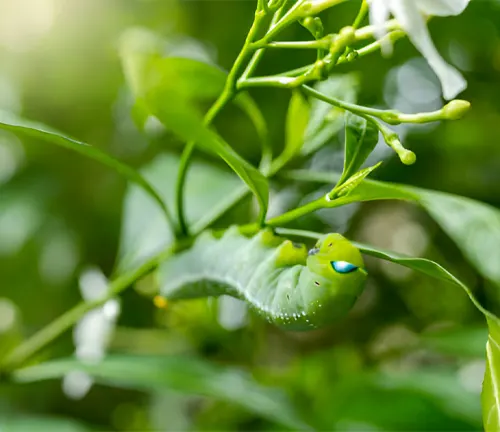
Forest Pests
Certain insects can become pests when their populations grow unchecked due to factors like climate change, lack of predators, or changes in forest management practices. Pest species, such as bark beetles or gypsy moths, can cause widespread deforestation, threatening the economic and ecological stability of forests.
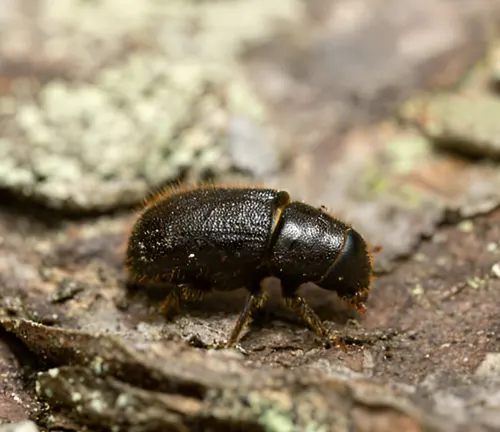
Major Research Areas in Forest Entomology
Forest entomologists conduct research in a variety of areas to better understand the role of insects in forest ecosystems and develop strategies for managing insect pests. Some key research areas include:
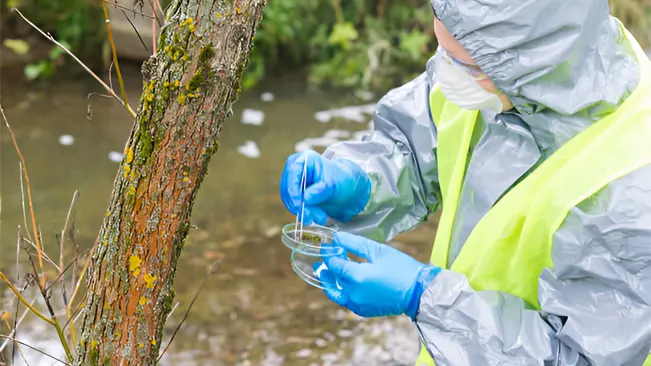
- Insect Ecology and Behavior: Understanding the behavior, life cycles, and population dynamics of forest insects is critical for predicting and managing pest outbreaks. Forest entomologists study the interactions between insects and their environment, including the influence of temperature, humidity, and food availability on insect populations.
- Pest Management: One of the primary goals of forest entomology is to develop effective pest management strategies that minimize the impact of insect pests on forests. This includes biological control methods, such as introducing natural predators or parasites to control pest populations, as well as chemical and cultural control methods.
- Climate Change and Insect Populations: Climate change is affecting insect populations worldwide, leading to shifts in the distribution and abundance of many species. Forest entomologists study how changes in temperature and precipitation patterns influence insect behavior and the timing of pest outbreaks.
- Insect-Plant Interactions: The relationship between insects and the plants they feed on is a critical area of research in forest entomology. By understanding how insects select their host plants and how plants respond to insect feeding, scientists can develop strategies to protect valuable tree species from pest damage.
- Invasive Species: Invasive insect species, such as the emerald ash borer and Asian longhorned beetle, pose a significant threat to forests worldwide. These species often have no natural predators in their new environments, allowing them to spread rapidly and cause extensive damage. Forest entomologists work to track the spread of invasive species and develop methods to control their populations.
- Forest Health Monitoring: Monitoring the health of forests and detecting early signs of insect infestations is a critical part of forest management. Forest entomologists use a variety of tools, including remote sensing, pheromone traps, and field surveys, to monitor insect populations and assess the overall health of forest ecosystems.
Notable Forest Pests and Their Impact
Some of the most notable forest pests include:
- Bark Beetles: These insects bore into the bark of trees, disrupting the flow of nutrients and water. Outbreaks of bark beetles, such as the mountain pine beetle and spruce beetle, have caused extensive tree mortality in North America and Europe. Climate change has contributed to the increased frequency and severity of bark beetle outbreaks.
- Gypsy Moth: The gypsy moth is an invasive species in North America that feeds on the leaves of a wide variety of tree species. During outbreaks, gypsy moth larvae can defoliate entire forests, weakening trees and making them more susceptible to disease and other pests.
- Emerald Ash Borer: Native to Asia, the emerald ash borer has killed millions of ash trees in North America since its introduction in the early 2000s. The loss of ash trees has significant ecological and economic impacts, particularly in urban and riparian areas where ash is a dominant species.
- Spruce Budworm: This defoliator is a major pest of spruce and fir forests in North America. Spruce budworm outbreaks can last for several years, leading to widespread tree mortality and significant economic losses for the timber industry.
Forest Pest Management Strategies
Effective management of forest pests requires a combination of approaches that target different stages of the insect life cycle and address the underlying causes of pest outbreaks. Some common pest management strategies include:
- Biological Control: This involves the use of natural predators, parasites, or pathogens to control insect populations. For example, parasitoid wasps are often used to control populations of defoliating caterpillars.
- Chemical Control: In some cases, chemical insecticides are used to control pest populations. However, the use of chemicals is often a last resort due to their potential negative impacts on non-target species and the environment.
- Silvicultural Practices: Forest management practices, such as thinning and controlled burns, can help reduce the risk of pest outbreaks by improving tree health and reducing the availability of host trees for insect pests.
- Genetic Resistance: Researchers are working to develop tree species that are genetically resistant to certain insect pests. For example, efforts are underway to breed ash trees that are resistant to the emerald ash borer.
- Monitoring and Early Detection: Early detection of pest infestations is critical for preventing widespread damage. Forest managers use a variety of monitoring tools, including pheromone traps, aerial surveys, and satellite imagery, to detect pest outbreaks before they become unmanageable.
The Future of Forest Entomology
As forests around the world face increasing threats from climate change, invasive species, and human activity, the field of forest entomology will play an increasingly important role in protecting these vital ecosystems. Future research will likely focus on developing more sustainable pest management strategies, improving our understanding of the effects of climate change on insect populations, and finding ways to mitigate the impact of invasive species.
Advances in technology, such as the use of drones and remote sensing for monitoring insect populations, will also enhance the ability of forest entomologists to detect and respond to pest outbreaks more quickly and efficiently.
Conclusion
Forest entomology is a critical field that helps us understand the complex relationships between insects and forest ecosystems. By studying the behavior and impact of forest insects, entomologists can develop strategies to protect forests from the devastating effects of pests while maintaining the ecological balance that supports biodiversity and forest health.
Whether it’s managing the threat of invasive species, understanding the impact of climate change, or developing new pest management techniques, forest entomologists will continue to play a key role in safeguarding our forests for future generations.
Frequently Asked Questions (FAQs)
- What is forest entomology?
Forest entomology is the scientific study of insects that live in forest ecosystems. It focuses on understanding the interactions between insects and trees, how insects impact forest health, and methods to manage insect populations, especially pests. - Why is forest entomology important?
Forest entomology is vital for maintaining forest health, protecting biodiversity, and managing pest outbreaks. Insects play both beneficial and harmful roles in forests, and understanding their behavior helps in conservation efforts, pest management, and sustainable forestry practices. - What kinds of insects do forest entomologists study?
Forest entomologists study a wide variety of insects, including pollinators, decomposers, herbivores, and pests such as bark beetles, gypsy moths, and emerald ash borers. Their research covers both beneficial insects and those that can damage forests. - How do insects affect forest ecosystems?
Insects affect forest ecosystems in many ways. Beneficial insects like pollinators help with plant reproduction, decomposers recycle nutrients, and predators help control harmful insect populations. However, pest insects can cause deforestation, tree mortality, and ecological imbalances. - What are some of the most harmful forest pests?
Some of the most harmful forest pests include bark beetles, gypsy moths, emerald ash borers, and spruce budworms. These pests can cause widespread deforestation, economic loss in the timber industry, and disrupt ecological balance in forest ecosystems. - How do forest entomologists manage insect pests?
Forest entomologists use a variety of pest management strategies, including biological control (using natural predators), chemical control (insecticides), and cultural practices like forest thinning and controlled burns. They also develop early detection and monitoring systems to prevent widespread infestations. - How does climate change impact forest insects?
Climate change affects forest insects by altering their life cycles, behavior, and distribution. Warmer temperatures and changing precipitation patterns can lead to more frequent and severe pest outbreaks, especially for species like bark beetles, which thrive in warmer conditions. - What role do invasive species play in forest health?
Invasive insect species, such as the emerald ash borer and Asian longhorned beetle, can devastate forest ecosystems by outcompeting native species, lacking natural predators, and spreading rapidly. They cause significant ecological and economic damage. - How do forest entomologists track insect populations?
Forest entomologists track insect populations using methods such as pheromone traps, aerial surveys, satellite imaging, and field surveys. These tools help them monitor insect behavior, detect early signs of infestations, and develop effective management strategies. - What career opportunities are available in forest entomology?
Career opportunities in forest entomology include positions in research, forest management, pest control, conservation, academia, and government agencies. Forest entomologists work to protect forests from pests, study insect ecology, and develop sustainable forestry practices.

Jordan Blake
Forestry AuthorJordan Blake is a forestry expert with over 15 years of experience in arboriculture and community education. Passionate about sustainable forest management, Jordan regularly writes for Forestry.com and Tree Care Magazine. Holding certifications in tree health assessments and urban forestry management, Jordan conducts workshops to educate the public on sustainable practices. Jordan has a degree in Environmental Science and enjoys hiking and photography in their free time.




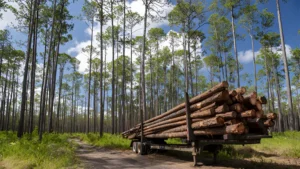
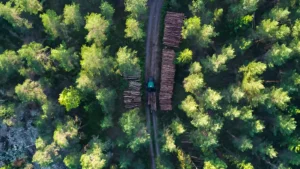



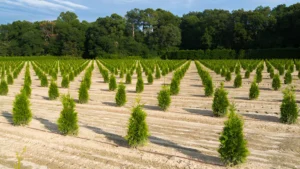



Leave your comment